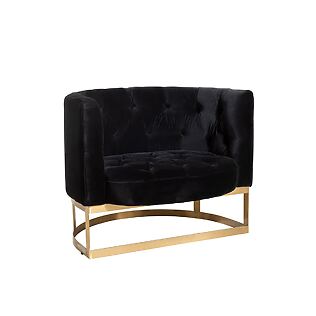Sigmar Polke is one of our most prominent artists - and yet there was never such a continuous media spectacle as about the works of many other celebrated artists. This makes Polke one of the evidence of how much there is to discover at all times away from the most celebrated art for everyone who can see themselves and would like to learn more.
Polke was never one of the artists who kept talking through public appearances or in the media, and yet more was written about him in the art world than many of his loud colleagues. Because he received a considerable career behind him and significant awards.
At the beginning of his life, like many of his contemporaries, Polke had to endure several changes in the war. He was born in 1941 in the Lower Silesian Oels, from which the family first fled to Thuringia after the end of the war. However, the political landscape in the GDR did not appeal to the Polkes in the beginning, as early as 1953 they fled from the GDR to West Berlin and moved from there to North Rhine-Westphalia, to the Lower Rhine.
After school, Polke went into teaching glass painter After graduating, he began studying at the Düsseldorf Art Academy . He learned from Gerhard Hoehme and Karl Otto Götz, two outstanding representatives of abstract painting and the German Informel.
At the academy, Polke got to know Gerhard Richter and Konrad Lueg, with whom he “founded an art style” in 1963, as the friends called it. They gave this art style the name “Capitalist Realism” , an ironic allusion to the art movement of the GDR with their official term “socialist realism”.
The conception quickly followed the first realization, the “Life with Pop - a demonstration for capitalist realism” campaign. The first public exhibition, in which Manfred Kuttner was also involved in addition to Richter and Lueg, also took place in a demolition house in Düsseldorfer Kaiserstrasse in 1963. With their capitalist realism, the artist fans not only wanted to differentiate themselves, the term also stood for their critical view of the beginning of mass consumption and the belief in progress without inquiries.

by Roland ZH [CC-BY-SA-3.0], via Wikimedia Commons
Which he always combined with the right substrates, for example a well -known wallpaper or a much sold fabric.
This concept carried out with a lot of joke that the irony made it clear was well received: in 1966 Polke received the art prize of the German Youth in Baden-Baden. However, he never stopped in his style, but used his motifs in the advertising painting of the time, occasionally switching to the scale of the points , which he dissolved unusually roughly, and also used materials very early on that remained alive after painting, for example, could change color.
Since this art prize in 1966, Sigmar Polke has been a sought -after artist who organized several own exhibitions every year and lively participated in joint exhibitions.
In 1967 Polke graduated from the art academy, in 1970 and 1971 he was appointed to the University of Fine Arts in Hamburg as an visiting professor, from 1977 to 1991 he taught in a permanent professorship.
three times on Documenta with his art (Documenta 5 1972, Documenta 6 1977 and Documenta 7 1982), was awarded in 1975 at the 13th Biennale São Paulo, after some inner German awards the Golden Lion of the 47th Biennale Venice followed.
Polke was able to achieve many art prices as a result, today his works can be visited by the public at many national and international exhibitions, or you can see the beautiful Sigmar-Polke windows in the Zurich Grandmünster, the five glass and seven agate windows have been visited since 2009.
Sigmar Polke is one of the artists where there is a lot to discover and where it is huge pleasure to always discover new things. Polke's inventive art is probably also a good tip for collectors at the moment, with a little luck, signed and numbered serigraphies can still be purchased for three -digit sums.
Further information on galleries and exhibitions with works by Sigmar Polke can be found via the following link:


















